| Warner and Swasey Observatory |
| Case Western Reserve University | Nassau Station |
| Visitors |
|
» Home » News » Gallery » Reference » Weather |
| Science Resources |
|
» NSRT User Interface » Software » Data Archive » Download Data |
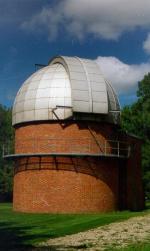
|
 |
Nassau Station

| Different elements at different states of ionization have characteristic spectra that identify them with great certainty. This means that an element that is at a particular temperature (and has lost some or all of its electrons) will make this known in its spectrum. Studying the spectra of stars is, therefore, very revealing of the composition and temperature of the stars. |
|---|
| The following graph depicts the spectra of different stars. The first characters specify the color of the star (absorption lines). If there is more than one number or more than one set of a letter and number, that means that the spectrum is an average over all the types in between. The final character (a Roman numeral) is the luminosity class. Both of the graphs below have V at the end, which means that these are all spectra of main sequence stars. The colors of the graphs roughly correspond to the colors of the stars, although the graph colors are exaggerated so that they can be seen. The points where the graphs go to zero are when the sky was too cloudy to take data. |
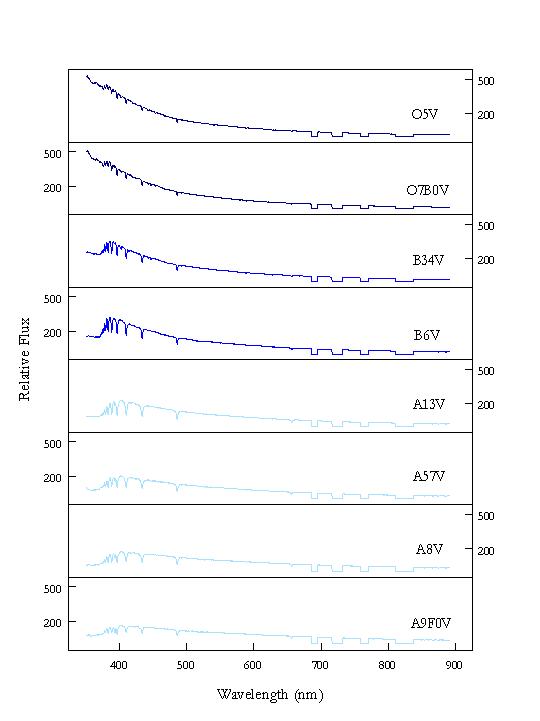 |
| Notice how the shape of the curve gradually changes as the spectral type changes. It starts out as a descending curve, it then flattens out, and switches direction so that by the K stars the curve is ascending. |
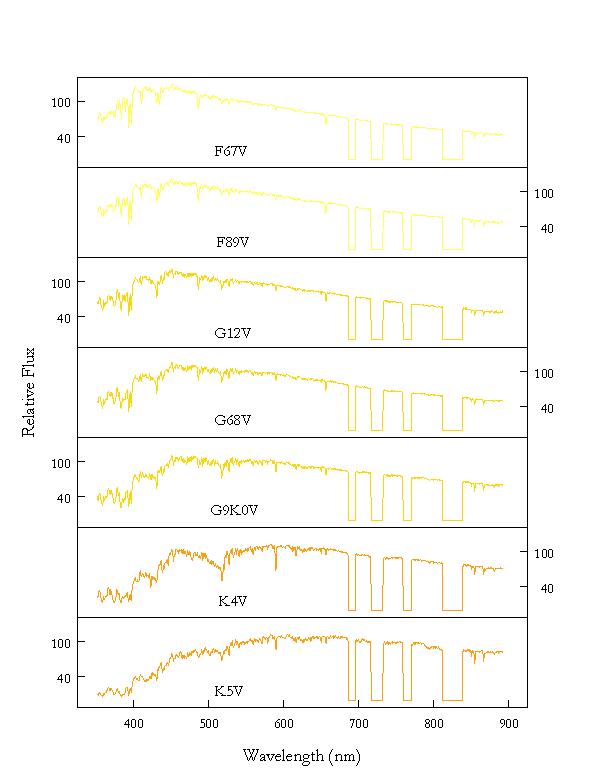 |
| The following specta are from assorted giant stars. Notice that the shapes of these curves are very similar to the curves of main sequence stars of the same spectral classes. There are more spectral lines in the giant stars because there are more assorted elements at different ionization states. |
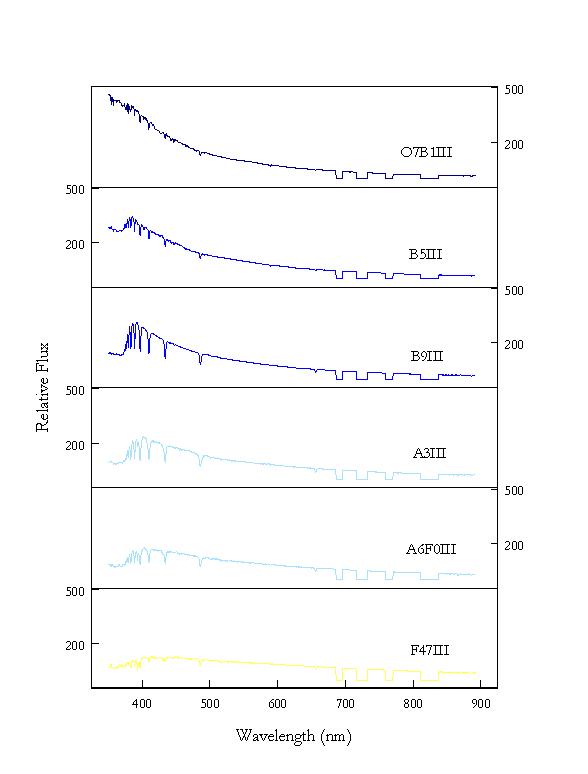 |
| The next spectra are from super giant stars, and they too have similar shapes to those of the main sequence and giant stars, but with slightly different absorption lines. |
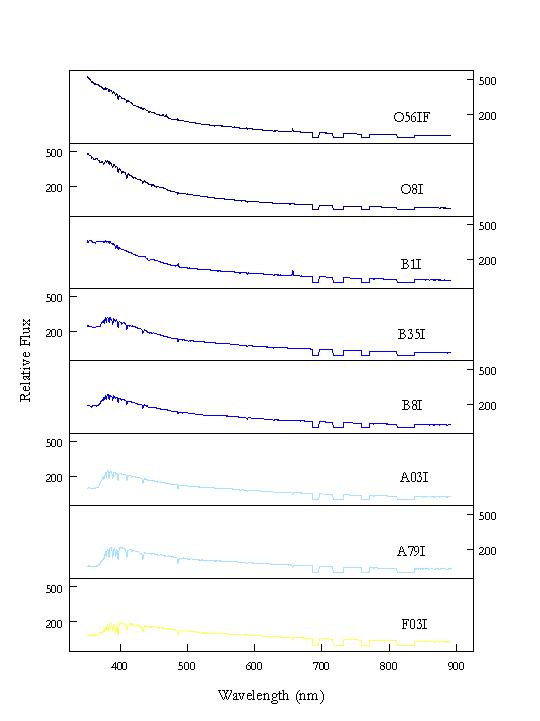 |
| The following graph compares the spectra of three O stars from different luminosity classes. The lightest blue is a main sequence star, then a red giant, and the navy is a red supergiant. Notice how the graphs differ, even though their shapes are incredibly similar. |
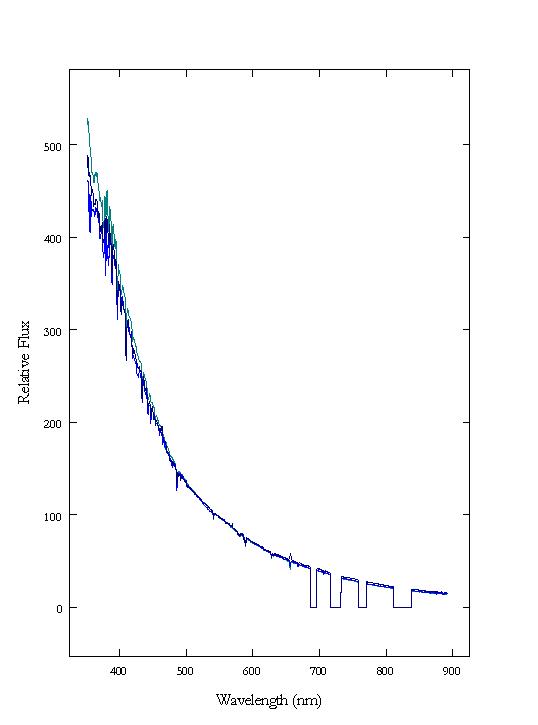 |
Created by Marta Lewandowska, August 1999.
©1999 CWRU Astronomy Dept.
comments
Last modified August 1999.
Case Western Reserve University